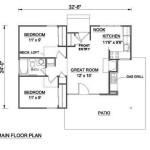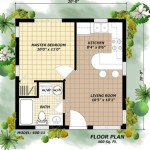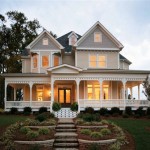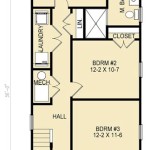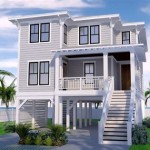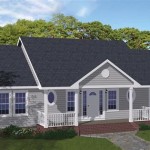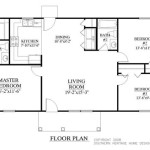Detached 3-Car Garage Plans: Considerations for Design and Construction
Detached 3-car garage plans are increasingly sought after by homeowners requiring ample space for vehicle storage, workshops, or supplemental storage solutions. These plans offer a distinct advantage over attached garages, providing spatial separation from the main residence. This separation can be beneficial for noise reduction, odor containment, and independent temperature regulation. Selecting the appropriate plan involves considering several factors, including land availability, budget constraints, local building codes, intended usage, and architectural compatibility with the existing house.
The concept of a detached 3-car garage extends beyond mere vehicle parking. Many individuals utilize the space as a dedicated workshop for hobbies like woodworking, automotive repair, or crafting. Others transform the garage into a home gym, a storage area for seasonal items, or even a small business operation. The flexibility inherent in a detached structure allows for greater customization compared to an attached garage that is inherently bound by the design constraints of the primary dwelling.
The detached nature of these garages provides opportunities for creative design. Unlike attached garages that often need to blend seamlessly with the existing home's facade, a detached garage can have its aesthetic identity. This allows for the incorporation of architectural details or materials that might not be present in the main house, potentially adding visual interest to the property.
Key Considerations Before Selecting a Plan
Before delving into specific 3-car garage plans, it's essential to address several preliminary considerations. Neglecting these factors can lead to costly revisions or unforeseen complications during the construction process. These critical aspects encompass site characteristics, regulatory compliance, and defined functional requirements.
First and foremost, a comprehensive site assessment is paramount. This assessment should evaluate the topography of the land, soil composition, drainage patterns, and the location of existing utility lines. Uneven terrain may necessitate significant grading work, impacting the overall project budget. Understanding the soil type is crucial for determining the appropriate foundation design. Poor drainage can lead to water damage, necessitating the implementation of effective drainage solutions. Furthermore, identifying the location of underground utilities is vital to prevent accidental damage during excavation.
Compliance with local building codes and zoning regulations is non-negotiable. Zoning ordinances dictate permissible building sizes, setbacks from property lines, and height restrictions. Building codes outline structural requirements, electrical standards, plumbing regulations, and fire safety measures. Obtaining the necessary permits from the local authorities is a prerequisite before commencing construction. Failure to comply with these regulations can result in fines, stop-work orders, or even the forced removal of the structure.
A detailed needs analysis is essential to define the precise functionality of the garage. Will the garage serve solely as a vehicle storage space, or will it also accommodate a workshop, storage area, or other specialized functions? The intended usage will significantly influence the layout, size, and features of the garage. For example, a workshop will require adequate lighting, ventilation, and electrical outlets, while a storage area may benefit from shelving and organizational systems.
Popular 3-Car Garage Plan Designs
Numerous 3-car garage plan designs are available, each catering to specific needs and aesthetic preferences. The optimal choice depends on the homeowner's individual priorities and the stylistic context of the existing residence. These designs can be broadly categorized by roof style, layout configuration, and construction materials.
Gable roof designs are among the most prevalent due to their simplicity, cost-effectiveness, and versatility. A gable roof features two sloping sides that meet at a ridge, offering a classic and timeless aesthetic. This design is relatively straightforward to construct and provides ample attic space for potential storage. A hip roof, characterized by four sloping sides that meet at a ridge, offers enhanced wind resistance and a more sophisticated appearance. However, hip roofs are typically more complex and expensive to construct than gable roofs. A shed roof, featuring a single sloping plane, is a modern and minimalist option that can be particularly suitable for contemporary homes. Shed roofs are generally cost-effective and easy to build, but they may not provide as much overhead storage space as gable or hip roofs.
Layout configurations can vary depending on the intended use of the garage. A standard 3-car garage layout typically features three individual bays, each accommodating a single vehicle. An alternative configuration involves a double-wide bay and a single bay, providing greater flexibility for larger vehicles or workshop areas. Some plans incorporate a tandem arrangement, where vehicles are parked one behind the other. This configuration is suitable for narrow lots but may require more maneuvering to access specific vehicles. Additionally, some designs incorporate a separate workshop area or storage room within the garage footprint.
Construction materials play a crucial role in the durability, aesthetics, and cost of the garage. Wood framing is a common and relatively inexpensive option, offering flexibility in design and ease of construction. Steel framing provides superior strength and durability but is generally more expensive and requires specialized expertise. Concrete block construction offers excellent fire resistance and sound insulation but may be less aesthetically appealing than wood or steel. The choice of siding materials also impacts the overall appearance and maintenance requirements of the garage. Options include wood siding, vinyl siding, fiber cement siding, and brick veneer, each offering varying levels of durability, aesthetics, and cost.
Essential Features and Customization Options
Beyond the basic structural components, several essential features and customization options can enhance the functionality and value of a 3-car detached garage. These features can be categorized as functional enhancements, aesthetic upgrades, and safety measures.
Adequate lighting is crucial for both safety and usability. Installing sufficient overhead lighting fixtures ensures ample illumination for tasks such as vehicle maintenance, woodworking, or general storage. Task lighting, such as spotlights or under-cabinet lighting, can provide focused illumination for specific work areas. Natural lighting can be incorporated through the addition of windows or skylights, reducing the reliance on artificial lighting during daylight hours. Proper ventilation is essential for removing fumes, odors, and excess moisture. Installing exhaust fans or ventilation systems can improve air quality and prevent the accumulation of harmful substances. Cross-ventilation can be achieved by strategically placing windows or vents on opposite sides of the garage.
Electrical outlets should be strategically placed throughout the garage to accommodate power tools, lighting fixtures, and other electrical devices. Dedicated circuits may be necessary for high-power equipment such as welders or air compressors. Insulation is essential for maintaining a comfortable temperature inside the garage, reducing energy costs, and preventing condensation. Insulating the walls, roof, and garage doors can significantly improve the thermal performance of the structure. Climate control systems, such as heating and air conditioning, can be installed to further enhance the comfort level of the garage, particularly in regions with extreme weather conditions. A well-designed storage system can maximize the usability of the garage. Options include shelving units, cabinets, overhead storage racks, and wall-mounted organizers. A workbench provides a dedicated workspace for various projects and repairs.
Security features are paramount for protecting valuable assets stored within the garage. Installing a secure garage door with a robust locking mechanism can deter unauthorized access. Motion-activated security lights can illuminate the area around the garage, deterring potential intruders. A security camera system can provide video surveillance of the garage and its surroundings. Fire safety measures are essential for preventing and mitigating fire hazards. Installing smoke detectors and fire extinguishers can provide early warning and enable swift response in the event of a fire. Fire-resistant construction materials can help contain a fire and prevent it from spreading to other structures.

3 Car Detached Garage Plan With Guest Room Bath And Loft 68706vr Architectural Designs House Plans

3 Car Garage Plans The Plan

3 Car Garage Plans Apartments Floor Designs

Plan 047g 0021 The Garage

3 Car Garage Plans Three Bay Drummondhouseplans

Detached 3 Car Garage With Work And Flex Space 68768vr Architectural Designs House Plans

Garage Plan 51642 3 Car Traditional Style

3 Car Garage Plans Apartments Floor Designs

30x34 Garage Plans 3 Car 2 Doors

Three Car Garage Plans

